Margay: This cat lives in the treetops and hunts monkeys. Her climbing and parkour abilities are phenomenal! (9 photos)
The long-tailed cat, or margay, is considered the most “arboreal” cat species. They don't scream if they suddenly get stuck in a tree. Because they simply won’t be able to get stuck in the crown - the seals have learned to descend head first and move upside down along the branches! But today their main advantage can easily become the Achilles heel of the species. 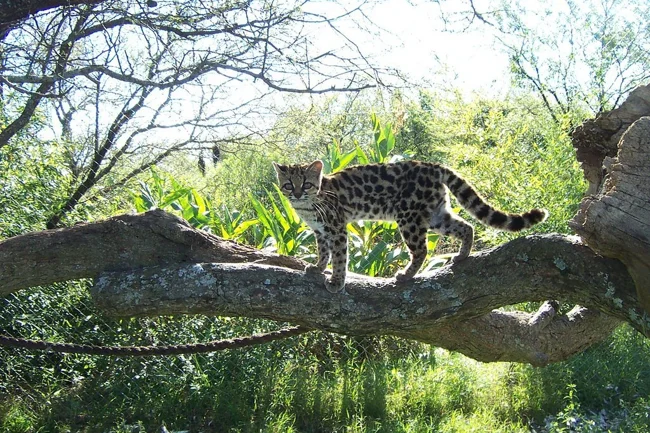
The margay is one of eight species of the genus of South American cats, or leopards (not to be confused with ordinary leopards!). In size, despite all their wildness, they are comparable to domestic murkas. Seals gain about 4 kilograms of weight and reach a length of more than a meter. Moreover, more than half of the cat is his tail. This is definitely where the name doesn’t deceive. 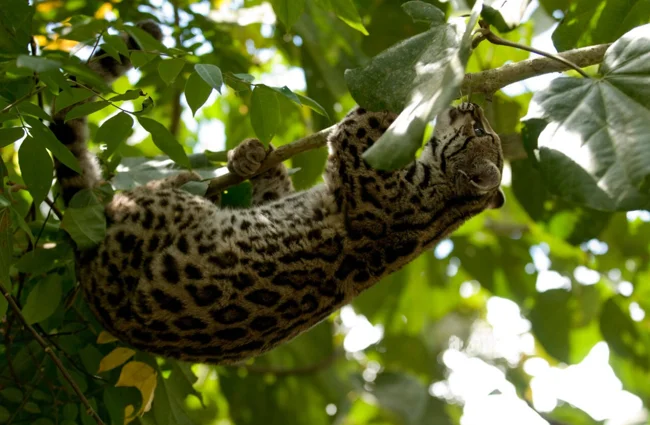
Long-tailed cats are also called little ocelots. True, apart from a spotted coat and belonging to the same genus, nothing connects them.
You can meet margay in South and Central America: the animals inhabit virgin forests from Mexico to Paraguay, and one animal can occupy an area of up to 16 square kilometers. It is quite possible that the animals live in other regions, scientists just haven’t found them yet. 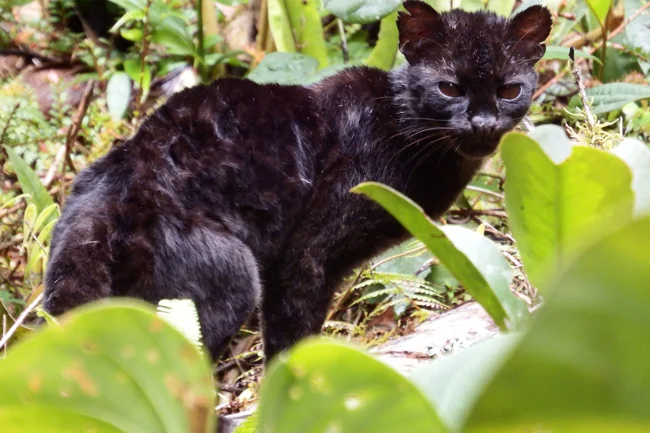
There may be a population of all-black margays. Just as there are black panthers among jaguars, melanistic individuals have recently been found among long-tailed cats.
Difficulties in counting and observations arise due to the lifestyle of the long-tailed cat - it almost never descends from heaven to earth. The species has taken up residence at the very tops of trees in the densest forests. Moreover, seals jump along the branches exclusively at night. In short, the beast has put together a combo from hard-to-reach places to explore. 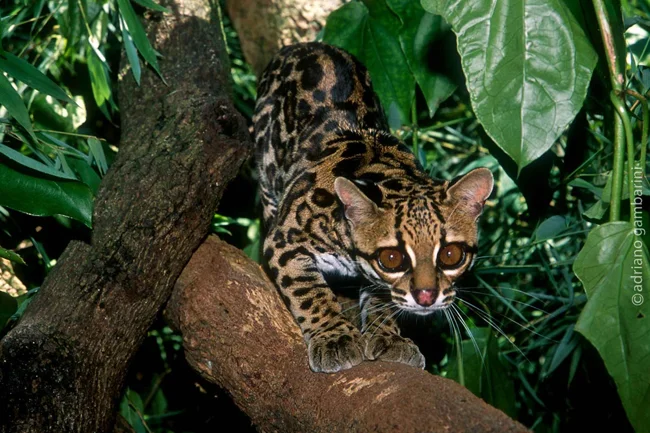
In such a life, Margays are helped by their special body structure and extraordinary abilities. The long tail serves as a balancer while the mustachioed ones jump from branch to branch and walk along the very tops of the trees. In one jump the predator covers a distance of 4 meters! And a special movable connection of the ankle bones allows cats to turn their hind legs 180⁰. Thanks to this, margays are able to climb down from trees upside down and hold on to branches upside down. 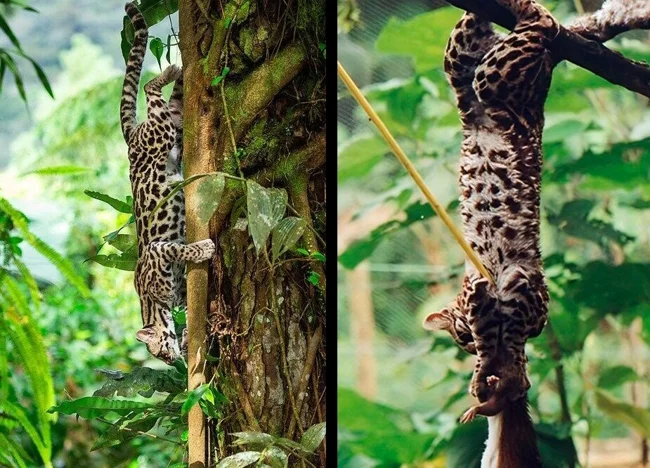
Such anatomical delights have opened up a new niche for long-tailed cats - they hunt animals that larger and less dexterous meat-eaters cannot catch. The margay menu consistently includes monkeys, birds, squirrels, lizards and tree frogs. But the long-tailed seals' favorite meal is primates. Margai make sounds similar to the cry of baby tamarins. Being extremely caring parents, the monkeys themselves fall into the clutches of a predator! 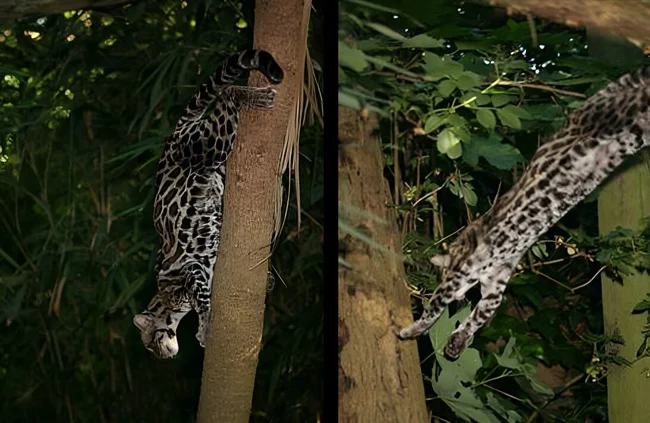
For most of the year, cats live alone. But during the breeding season, from October to January, they do the impossible for cats - they form pairs! Before the babies appear, the animals even hunt together. But as soon as the offspring appear, the father of the family evaporates on his territory. And in vain, because margays have big problems with reproduction. 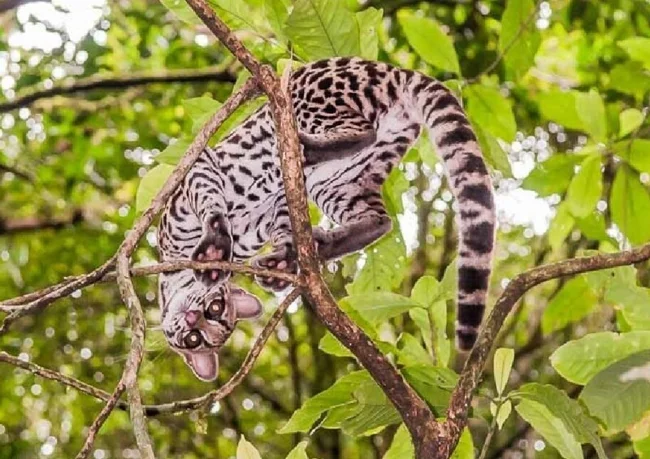
It all starts from the moment of conception. In most cats, ovulation, the most favorable period for pregnancy, occurs due to external influences. That is, sexual intercourse itself provokes fertilization. Most, but not long-tailed cats! We discovered this by studying the peepholes of males. All cats' privates are equipped with special spikes, which stimulate ovulation. And the long-tailed guys don’t have any oddities. In fact, female margays have a lower chance of getting pregnant than other cats. 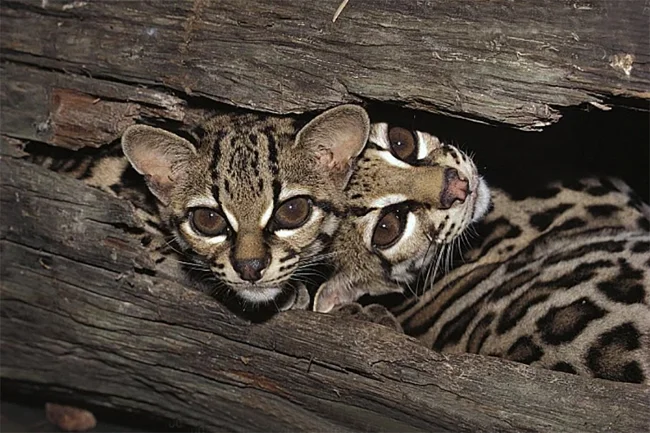
The number of margai kittens is also minimal by cat standards - the female gives birth to only 1-2 babies. For comparison, a domestic Murka produces 4-6 kittens! And it would be nice if the margays put the process of producing cubs on stream, but no - in her entire life, the female bears offspring only 2-3 times. 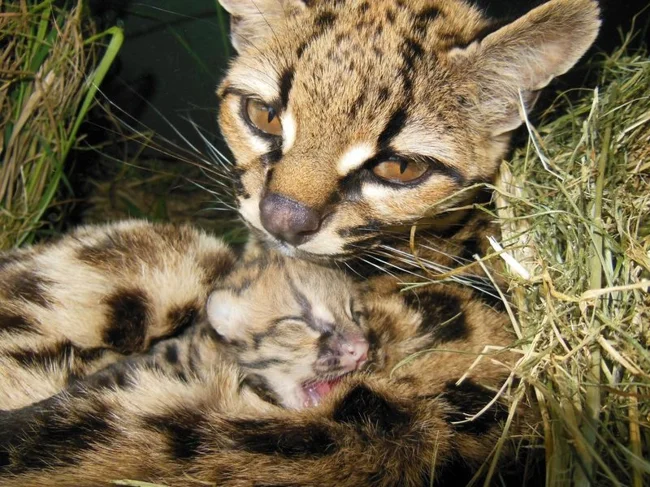
A long-tailed mother cat cannot bear more cubs even purely physiologically - she has only 2 nipples.
Previously, this would have been quite enough. But now, when the animals’ natural habitat is being destroyed, and the cats themselves are being caught for sale, everything is not going according to plan. Since 2008, margay has been included in the Red Book. The main threat is deforestation, to which animals are so accustomed.
